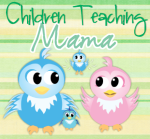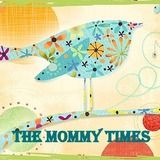We spend a lot of time in the kitchen- or at least, you should for health and financial reasons- so the kitchen is a prime place to stop and think about what you can do to lessen your impact on the environment. And as most things 'green' go, you might lessen your impact on your wallet!
All things Cloth:
A lot of being 'green' involves reusing which inevitably involves something you can wash. So cloth is a big part of our 'green' daily life. Pretty much the easiest way to consider what things you could change is to think of the things you throw away. Disposable plates, silverware, cups, napkins, towels, ziplock bags, saran wrap, etc. are a few of the things I can think of!
First up: plates, silverware, cups.
Yep, they're convenient. Especially if you don't have a dishwasher(like me!). But part of being green means giving up the convenient. Party hardy? Use the real stuff. Afraid of it breaking? Get reuseable plastic picnic type dishes and cups(make sure they are BPA free and all that jazz!). I'll admit, I still have some throw away items in the basement and it's the same leftover stuff I've had since hosting the Family Christmas back in '06. Once in a while I think to use them, but usually not. Be on the lookout at Target for those melamine dishes we should be seeing soon as picnic weather fast approaches! Better for your budget? Pick them up on clearance at the end of the season.
Napkins and towels:
Napkins are probably the easiest to switch to cloth. You can use all sorts of things. Buy nice ones in the store, make your own out of material you have at home(or clearance stuff at the fabric store!). We use two layer flannel for the most part. Some I made, some I bought. We have a pretty big stack and I use them often. (No surprise seeing as I have 5 kids 3 1/2 and under for 50 hours a week) I do have a set of nice store bought ones for company, but rarely remember to get them out and end up just using the day to day ones. These wipe hands, faces, noses, tables, etc. They are really great for kids as the cloth will not make tiny runny noses raw from wiping like paper kleenex will. The kids also don't mind the dreaded face wipe as much when they are warm and damp.
Paper towels were a little more difficult to switch from if only for the cleaning and bacon grease kind of things. But I decided one day it was my last roll of paper towels and I just would figure it out when they were gone! It's been close to a 3 years now since I've run out and we haven't bought more. For cleaning I have a special pile of towels that I make sure to run through a sanitization wash after using. Bacon grease? Got a little creative. I use the edge of a food box (like pasta noodles) to scrape into the waste basket or I save up fast food napkins to use in emergencies(broken glass, etc). I suppose if you just pour your hot grease into a can that negates the need for the whole scraping thing, too.
Sponges:
You could use regular wash rags in place of sponges but I prefer knit scrubbers out of cotton yarn. These give you a little more scrubbing texture as opposed to a soft cloth. I do have some cloth napkins with a terry side that work well in a pinch. Either way, it's much easier to remember to switch out a washable item then it is to toss a sponge after it's a giant germ motel. No worries about 'Oh, rats, I ran out of sponges!' Just grab another clean one and move on!
Bibs:
I don't think anyone uses disposable bibs so this is a non-issue. But on a side note, I've become a big fan of old fashioned flat cloth diapers tied at the back for certain messy meals or younger kids. They cover a bigger area and they can't be pulled off! Once used for burp rags in our home, these flats are now mainly used as bibs. When we're done with bibs, they'll be cleaning cloths!
Organization:
I have a shelf in my pantry dedicated to kitchen type cloth. It's in a spot easy to reach and see. If you have more than 3 drawers in your kitchen(seriously, that's all I have), a drawer would work great, too! For dirty stuff, I keep a little basket to toss things into and carry it to the basement when full. It's just a clear rubbermaid container that fits nicely under my sink and is hidden behind my cute sink skirt.
Ziplock bags and Saran wrap/foil:
Sometimes, there's just no way around using them. So I'm all for it, just on a reduced and recycled basis. For ziplock bags/thing needing saran wrap we try to use tupperware type containers with lids instead. I really like our pyrex set for warming things up. (Don't put plastic in the microwave!) You can also use a plain old canning jar! We use these for everything from snacks to leftovers in the fridge to taking lunch to work.
There are also now tons of options out there for cute reuseable baggies. We have a few! They work well for dry items like crackers. If you need to use a ziplock bag, try to wash it out, dry and reuse it(do not reuse bags that have had meat in them).
There are also now tons of options out there for cute reuseable baggies. We have a few! They work well for dry items like crackers. If you need to use a ziplock bag, try to wash it out, dry and reuse it(do not reuse bags that have had meat in them).
Kitchen compost and recycling:
I grew up with my mom composting things from our kitchen. She used a gallon ice cream bucket with a lid and put it on the counter or under the kitchen sink. During the summer it was emptied frequently so it rarely if ever got smelly! I know, not the most glamorous vessel out there but if you're really wanting to go ultra recycling/green, use a similar container from your home. (We don't eat ice cream by the gallon so that wouldn't work for us). We opted for a little more style and got a stainless steel bucket with lid and handle. It's stood up to plenty abuse and looks as nice as a compost bucket can. Seeing as I have nil counter space, it generally goes under the kitchen sink.
'But wait, what the heck goes in it?'
Oh yeah, I suppose that would help to know. Summed up, just about anything from your kitchen save for meat, bones, fat, grease and milk products. Also pits can't be composted if I remember correctly. But the end of the loaf of bread you hate to eat or moldy bread? Throw it in there. Egg shells? The best! Veggies you let spoil, cuttings from veggies and fruits, banana peels, coffee grinds, tea bags, even lint and newspaper! Throw it all in! The only thing you want to keep in mind is the size of most things. Example, cantalope(musk mellon) rinds. Those need to be cut up into large chunks. Newspaper should be shredded into strips. Banana peels, however, can go right in as is. You'll be surprised just how much you accumulate that you were throwing into the trash!
Oh yeah, I suppose that would help to know. Summed up, just about anything from your kitchen save for meat, bones, fat, grease and milk products. Also pits can't be composted if I remember correctly. But the end of the loaf of bread you hate to eat or moldy bread? Throw it in there. Egg shells? The best! Veggies you let spoil, cuttings from veggies and fruits, banana peels, coffee grinds, tea bags, even lint and newspaper! Throw it all in! The only thing you want to keep in mind is the size of most things. Example, cantalope(musk mellon) rinds. Those need to be cut up into large chunks. Newspaper should be shredded into strips. Banana peels, however, can go right in as is. You'll be surprised just how much you accumulate that you were throwing into the trash!
This is just the tip of the iceberg in composting and we'll get into what to do when your bucket is full In the Garden. In the meantime, here's a link to some different types of fancy containers you could buy: http://www.gardeners.com/Compost-Crocks/20707,default,sc.html We have the brushed stainless steel pail that's listed.
Recycling:
My trash can is in the kitchen, so that's how this ended up in this section(really little house!). Seeing as most places have a great recycling program now, it feels a bit unneccessary but just in case we'll talk briefly about it.
The best way to assess how well you are doing with recycling is to think about what you have in your hand as you are walking to the trash can. What is it? Can it be recycled?
Glass, aluminum cans, foil, paper, metal cans, paper bags, cardboard, junk mail, shredded paper, phone books, food boxes, plastic containers and more can all be recycled. That's a lot! And that's a lot that gets thrown away every day instead of recycled. So what do you do with this recyclable material now that it's in your hand and you don't want to put it in the trash?
Make a system that works for you! A paper bag under the counter works great. Maybe you have room for a special bin next to the kitchen in a mud or wash room. Seeing as my kitchen has a walkway of 3x9, space is a premium. What we've done is kept a plastic container(old recycling bin) just outside the side door which is just off the kitchen. Sometimes I'm lazy and make a little pile on the stove before making that looong trip to open the door and toss it outside. But when the outside bin is full I am able to empty it into the larger bin that is used by the city in their recycling program. We are really lucky to have a 'Curbit!' program so I don't have to drive it anywhere like my parents did when we were growing up. Even if you don't have a convenient program like this, it is still important to do as much as you can and make recycling a priority.
There are some things that shouldn't be recycled: frozen food boxes(has to do with a coating on the cardboard) pizza boxes, hazardous chemical containers, yard clippings/leaves, etc. Check with the city in your area to see what they cannot take.
Organic Food:
If you're new to organic food it may seem a little daunting at first. Higher prices being the major hurdle. The trick is knowing what is and isn't worth getting and knowing where to look. Many bigger retailers like Walmart and Target have started carrying their own organic store brand. These can save you some money over the more expensive name brand items. Farmers' Markets are another fantastic place to buy organic AND local. Nothing like cutting out the middle man and bring food home directly from the source! There are markets all over the place, most neighborhoods/suburbs have their own so you don't have to go downtown or to the boonies to find one. Also check around for natural food stores like Campbells. And of course being the internet age, there is a website that can help you wherever you are: http://www.localharvest.org/. They list Online Stores, Farms, CSAs, Farmers' Markets, Restaurants and Grocery/Coops. Pretty slick, check it out!
So just what is worth getting that is organic? Starting off, Meat and Dairy are two of the top recommended things to do if possible. Dairy includes milk, butter and yogurt. Meat includes eggs. The meat isn't at risk to high pesticide exposure but more so because it has the biggest environmental impact. This is because of the conventional methods used to raise animals, using hormones to speed growth, antibiotics to resist disease and pesticides and fertilizers to grow the grain needed to feed them. One story I think about often is what my husband saw while serving his mission in Brazil for two years. The girls there hit puberty much, much earlier than girls here due to the hormones added to their chicken. Even here my mother(who is a teacher), says it is occurring earlier than ever.
Dairy is mostly of note as it is a big part of kids' diets. Pesticides have been detected in human breast milk so of course it is going to be found in dairy products, as well. Most of the 'bad stuff' gets excreted in the fat that is used in milk, butter and yogurt. In recent studies it has also been found that organic milk/dairy products contain significantly more amounts of vitamins than conventional dairy products. They are now recommending pregnant/nursing women to drink organic milk as much as possible.
Now for the veggies and fruit. According to the Environmental Working Group (EWG), consumers can reduce pesticide exposure by 80% by avoiding the most contaminated fruits and vegetables. The easiest way to keep it all straight is to remember a few key things: produce with thin skin and stems creating an indentation in the top are most likely high in pesticide. This would include peaches, strawberries, apples, bell peppers, celery, pears, tomatoes, nectarines, grapes and cherries. The thin skin provides little barrier to the chemicals and the stem fruits have pooling of chemicals around the stems which allows for more absorption. Leafy greens (lettuce, spinach) and root crops such as carrots and potatoes are also recommended to buy organic.
I know, it's a lot. But never fear, because there is another rule of thumb if you don't have a money tree in your backyard. Buy organic what you eat a lot of. An apple every day? Get organic. Rarely get through a thing of yogurt before it expires? Don't buy organic. Simple.
I'll also list quickly things not to waste your money on buying organic: onion, avocado, sweet corn, pineapple, mango, asparagus, sweet peas, kiwis, cabbage, eggplant, papaya, watermelon, broccoli, sweet potatoes, tomatoes*. *debatable.
In general, being smart about what's worth buying organic and cutting processed foods as much as possible from your diet will equal a happy pocketbook and healthy body. Lastly, the cheapest way to get organic? Grow your own. And no excuses about a lack of yard or time- container gardening and square foot gardening are easy for even the level 0 and lazy gardeners. Shoot my gardens flood every year multiple times up to a foot deep! If I can do it, so can you!
Oh yes, and save those food scraps (minus meat and and dairy) for the compost pile!








































































2 comments:
Love this. I've started using Skoy cloths instead of paper towels and we reuse everything we can before tossing. And composting is a must.
This is great! I'm glad I found you and plan on doing some more reading throughout to learn more. I'm always interested in figuring out new ways to go green! Thank you!
Post a Comment